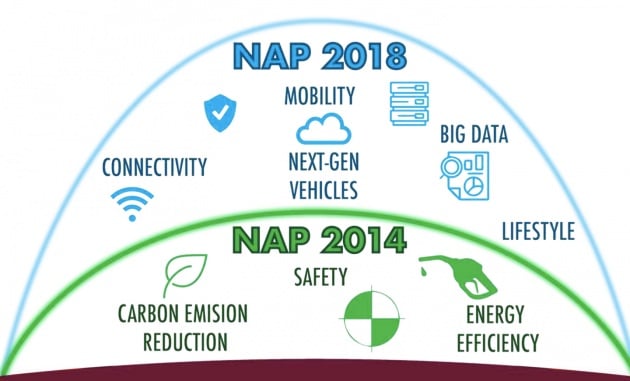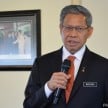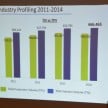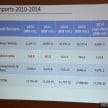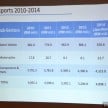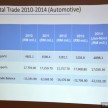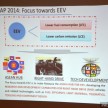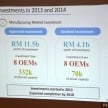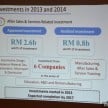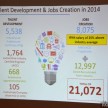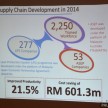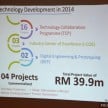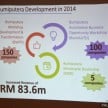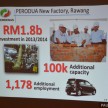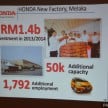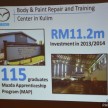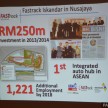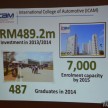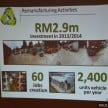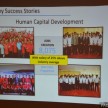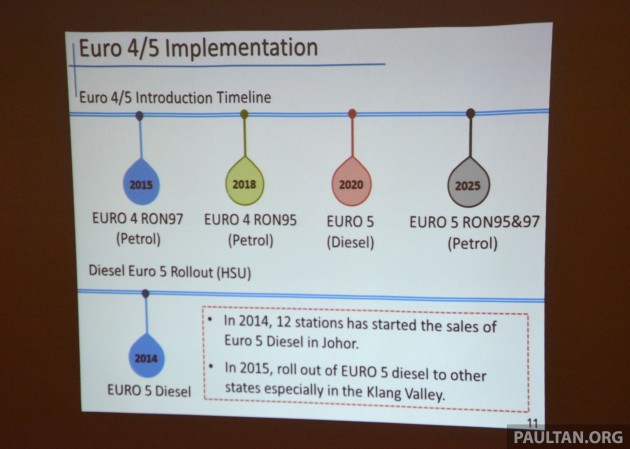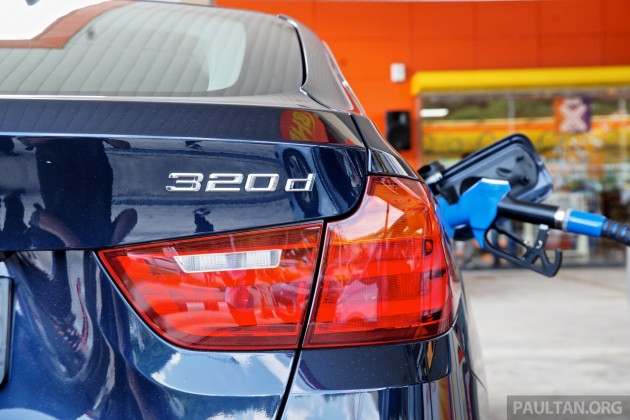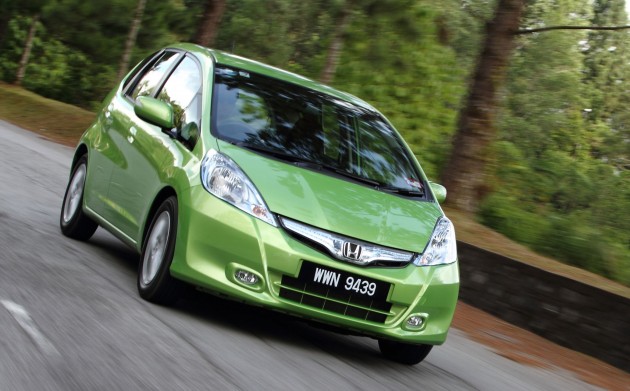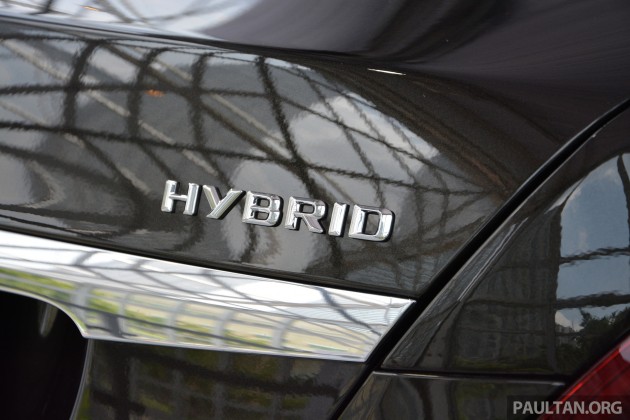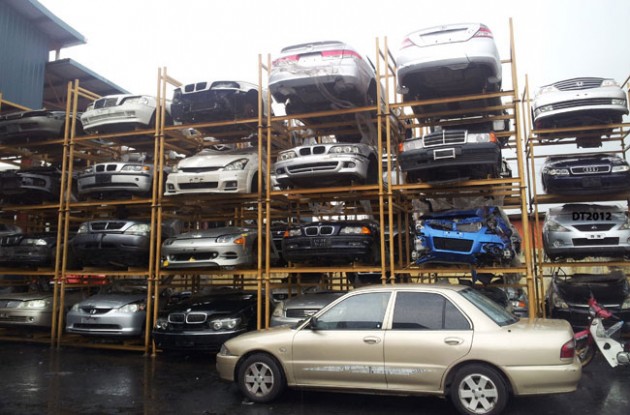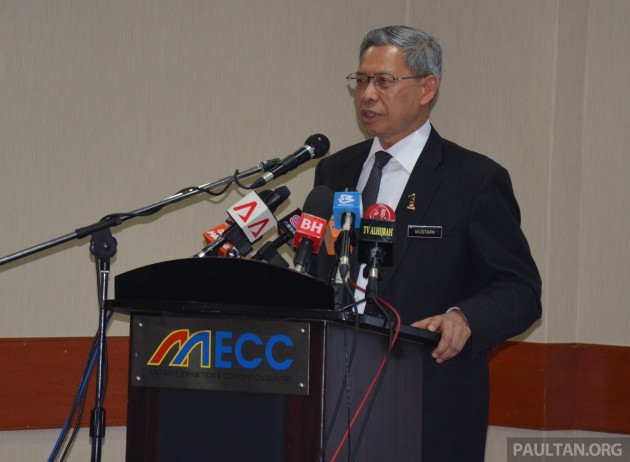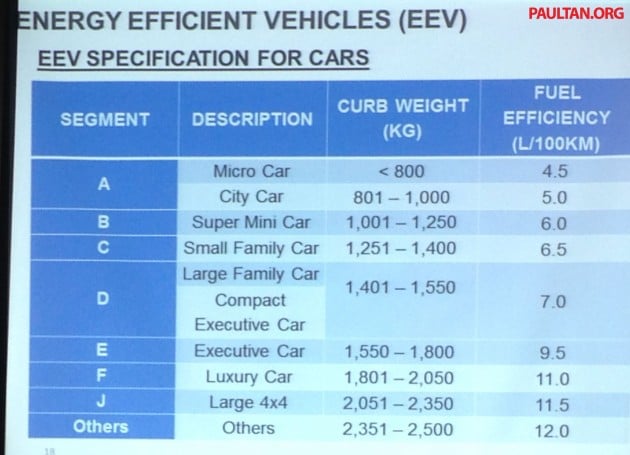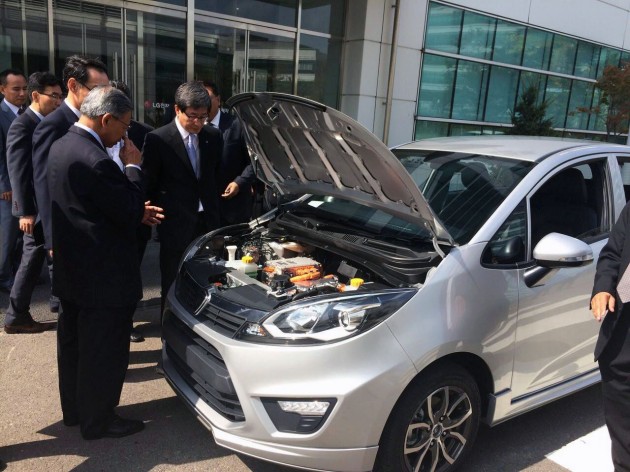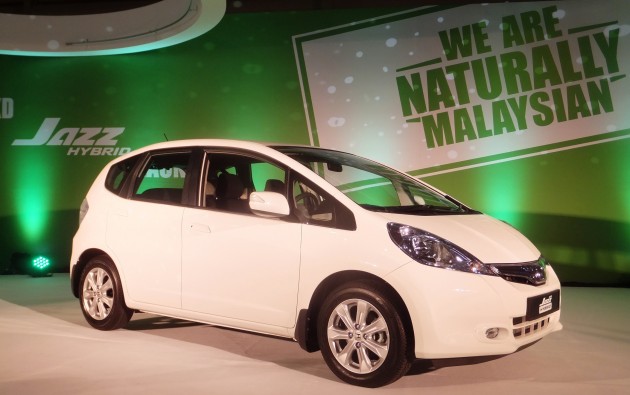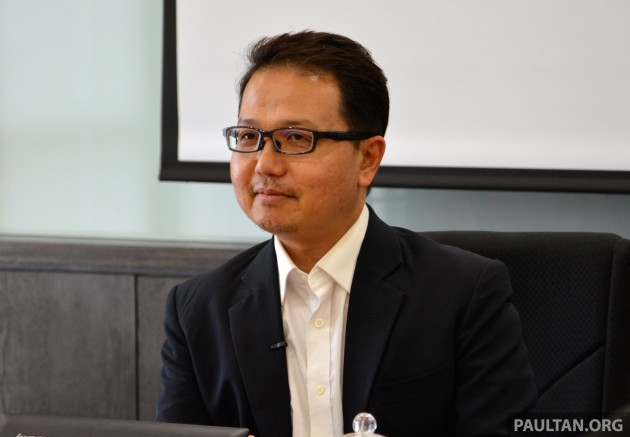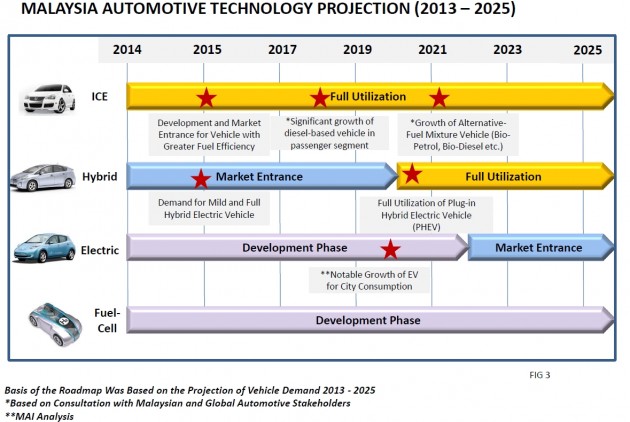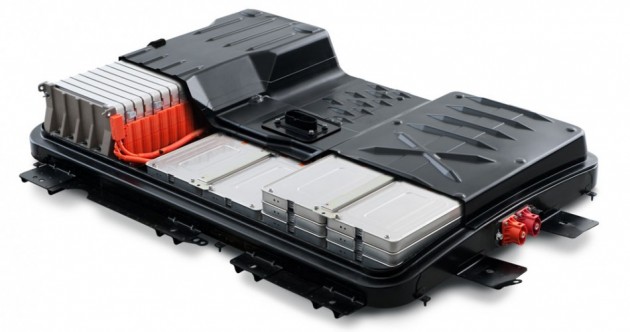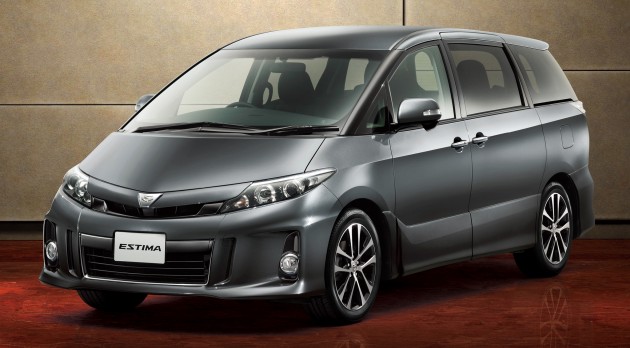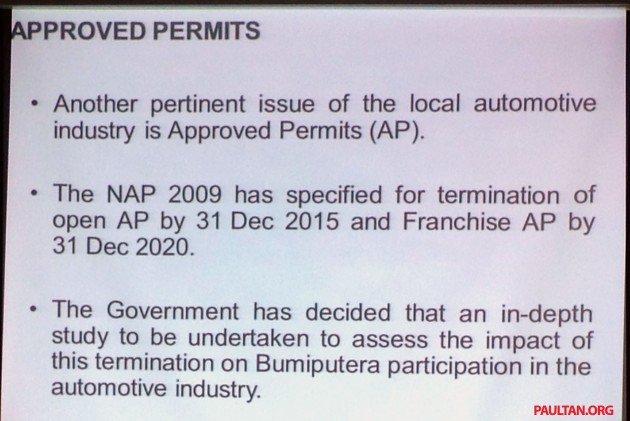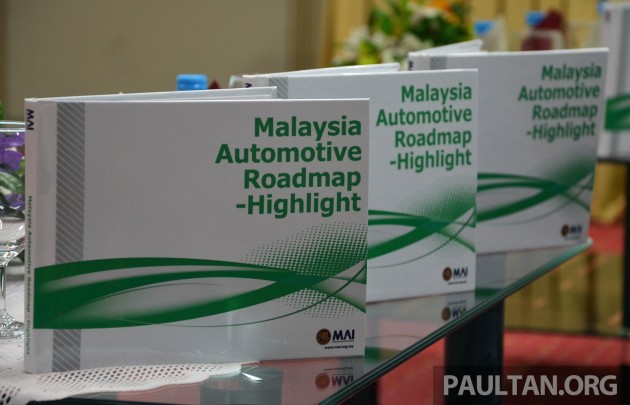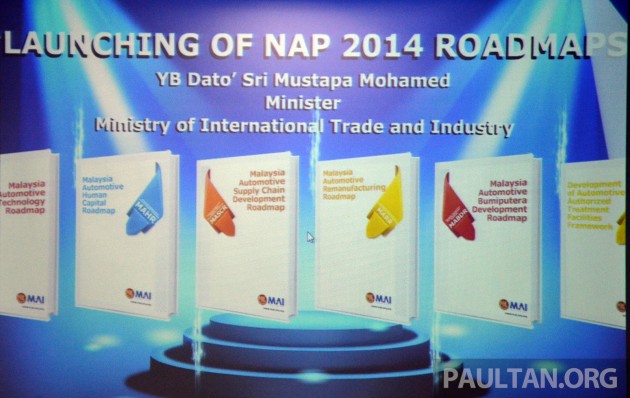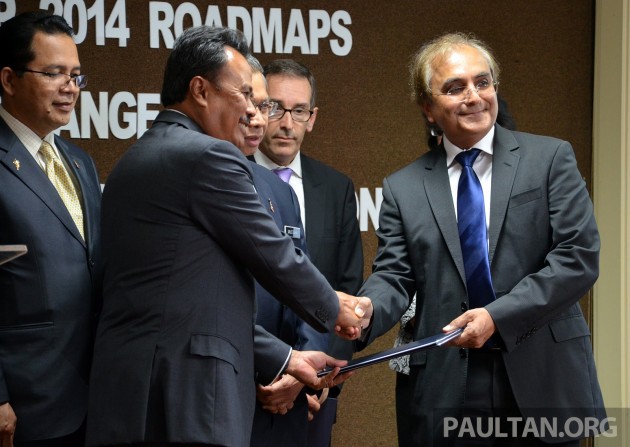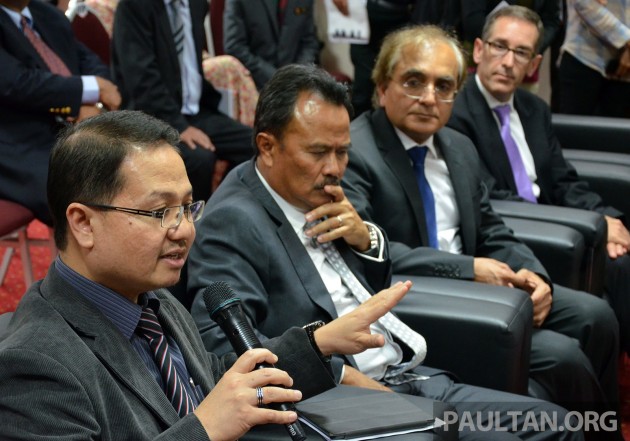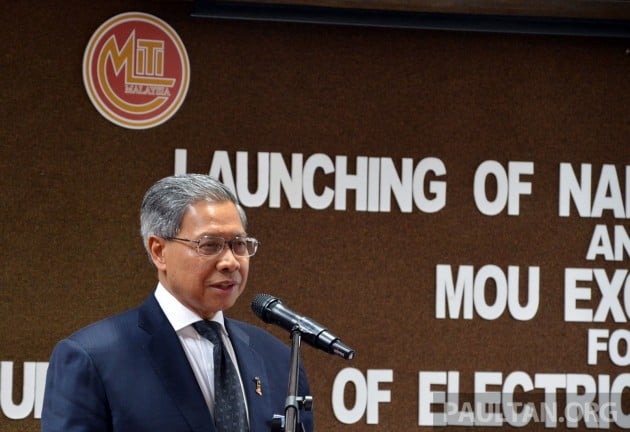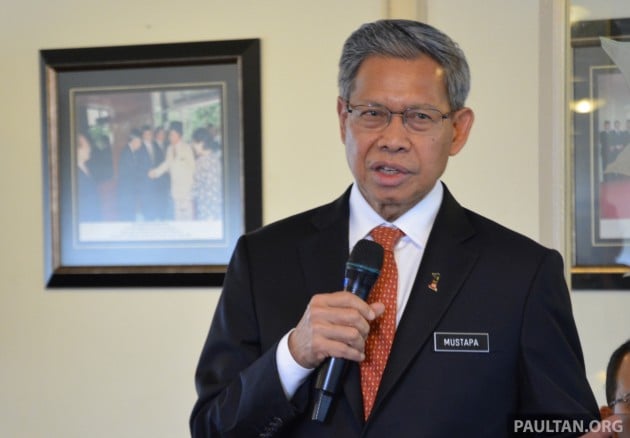
Minister of International Trade and Industry Datuk Seri Mustapa Mohamed provided members of the media earlier today with an overview of the past year following the National Automotive Policy‘s (NAP 2014) January 2014 implementation.
He reiterated that the policy’s key objective is to make Malaysia the ASEAN Energy Efficient Vehicle (EEV) hub by 2020, with opportunities including research and development for right-hand drive vehicles and related tech, such as fuel efficiency, lightweight material, telematics, tooling and component design.
Malaysia’s 2014 Total Industry Volume (TIV) grew 1.6% to 666,465 units, compared to 2013’s 655,793. Approved investments in the auto manufacturing sector totalled RM11.5 billion, while those in the after-sales and services sectors reached RM2.6 billion.
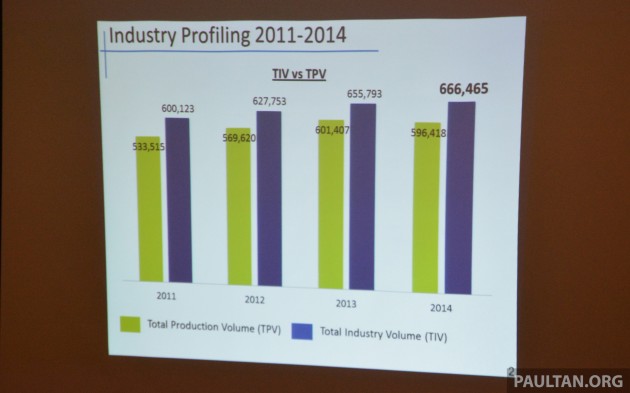
As of end-2014, RM4.9 billion of these investments was realised, boosting production capacity by 70,000 units a year. These investments began in 2013 and will be completed by 2018 to yield an increase in the existing production capacity from 600,000 to 923,000 units.
Eight carmakers are involved in these investments – of these, only Perodua, Honda, Go Auto (Great Wall Motors) and Mazda were mentioned, and they all happen to be EEV carmakers.
Where the auto sector is concerned, Malaysia exported almost RM4.9 billion worth between January and November last year (cars, RM550.6 million) – a RM306.7 million drop from 2013. Conversely, we imported just over RM17 billion in the same period (cars, RM8.8 billion) – that’s RM878.5 million less than we did in 2013.
Reasons cited for the fall in both imports and exports include a “challenging market,” increasing ASEAN competition and our comparatively small market.
The trade balance therefore stands at RM12.1 billion in favour of imports for the first 11 months of 2014. This is our narrowest import/export gap in the 2010-2014 period. Mustapa said the final figures, taking December into consideration, will be revealed in due course.
Asked if a decision has been reached on whether to retain or abolish the Approved Permit (AP) system, the minister revealed that a study on the issue is “almost finalised,” and that he is due to be briefed sometime next week before he presents it to the government.
Elsewhere, the Malaysia Automotive Institute (MAI) trained a total of 8,075 people in 2014, with almost all of them securing jobs in the auto sector at wages around 25% higher than the industry average. A total of 21,072 new jobs were created in 2014, comprising mostly technicians, skilled and semi-skilled workers and engineers.
Additionally, MAI’s implementation of the Lean Production System and Automotive Supplier Excellence Programme was said to have improved productivity by 21.5%, saving RM601.3 million amongst 277 vendors.
As of end-2014, 21 technology projects were initiated, with a total value of about RM39.9 million. Four of these projects have been commercialised by December 2014.
Other topics from the NAP 2014 status update:
New car prices dropped 7% on average last year, 20% reduction on average by end-2017 targeted – MITI
Euro 5 diesel to begin selling in Klang Valley this year
No plans to extend CKD hybrid tax exemptions as yet
Public not ready for Vehicle End of Life policy – Tok Pa

